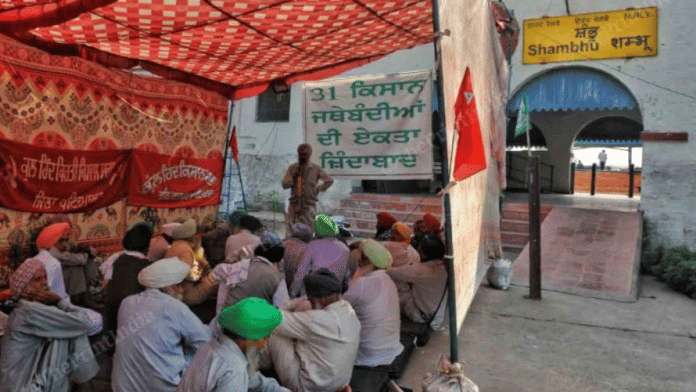Thank you dear subscribers, we are overwhelmed with your response.
Your Turn is a unique section from ThePrint featuring points of view from its subscribers. If you are a subscriber, have a point of view, please send it to us. If not, do subscribe here: https://englishdev.theprint.in/subscribe/
Protesting farmers at Shambu Border robustly underline how economic distress can be a powerful cause for disaffection among state and non-state actors alike. Bhindranwale himself was an impoverished farmer and his family had to struggle for a living akin to those of the many young men who took up arms alongside him and continue to do so even after his death.
Large sections of unemployed youth in Punjab worship Bhindranwale often with a devotion at par with that for Sikh Gurus primarily because he has come to epitomize their ‘hakkan di larai’ (fight for their rights), which many translate as a separate homeland.
That the Congress supported Bhindranwale in the 1978 SGPC elections is well-documented; as is the fact that during the Punjab elections of 1980, he canvassed for some Congress candidates.
An ugly parallel, the conspiracy theory shrouding Amrit Pal’s entry into Punjab politics allegedly on the behest of the ruling dispensation needs to be viewed against the backdrop of the festering low-productivity-driven farmer distress and the small and marginal farmers-led agitation that refuses to die. It seems to have scarred the Punjabi psyche severely enough for an on-duty farmer’s daughter (CISF official) to slap a newly elected MP on 6 June at the Chandigarh airport—also serving to endorse the Jat-Sikh established reputation for reckless courage.
The Green Revolution indubitably brought prosperity to rural Punjab, but it also exacerbated inequalities among Jat-Sikhs, the predominant landowning community in Punjab when differences in landholding size multiplied into differentials in wealth and status. Even today, unemployed Sikh youth who flock to numerous deras in the Punjab hinterland are semi-literate at best, from poor homes and, sadly, constitute ready material for radicalisation.
Ranked first in GDP per capita amongst Indian states in 1981, Punjab suffered a major setback during the militancy years, precipitating a downslide. By 2001, it had slipped to the fourth rank, and continues to experience the second-slowest GDP per capita growth rate of all Indian states and UTs, behind only Manipur.
While the Green Revolution in Punjab had several positive and negative impacts, the introduction of the mechanised agricultural techniques brought in its wake uneven distribution of wealth. The industrial development trailed agricultural growth since the Indian government has been reluctant to set up heavy industries in a high-risk border state. Alongside, rapid increase in higher education opportunities without a commensurate uptick in jobs resulted in increasing unemployment of educated youth, who were drawn in large numbers into militant groups to form the backbone of the Punjab militancy during the 1980s.
Writing in his tell-all ‘Turmoil in Punjab’, Ramesh Inder Singh, Deputy Commissioner Amritsar during the dark days of Operation Blue Star and after, states: “Since the militants lacked legitimacy, they fell back on what scholar Mark Juergensmeyer called ‘meta-morality that religion provides’[….]As the violence accelerated, Pakistan stepped in to train and arm the militants[….]Operation Blue Star sowed the seeds for an ethno-national struggle, triggering greater violence[….]Punjab suffered humongous losses. About 30,000 people died in a decade of violence. The state slipped from the number one position to below 15th among states on most of the socio-economic parameters.”
Unable to arrest the downswing that continues unchecked, the economy of Punjab has now slipped to the 16th spot, while its per capita GDP ranks 19th.
The rising lack of job opportunities means more youth joining Punjab’s burgeoning deras. With good reason, many attribute the mindless violence sweeping the state to these sectarian institutions that readily condone and even authorise killings, mostly against defenceless unarmed victims. If the rising number of sacrilege-related incidents are any indication, they have pushed the police into a fear psychosis, too cowed to act.
Will Punjab dial back into a Republic of Fear should such violence attain legitimacy under the new partisan Akali Dal proposed by the newly elected MP, Sarabjit Singh? Can it become a political force to reckon with should the Mann-Amrit Pal-Sarabjit triumvirate come into being to become a rallying point for radicals?
These pieces are being published as they have been received – they have not been edited/fact-checked by ThePrint.


